Canteen Committee
“Spread love everywhere you go. Let no one ever come to you without leaving happier.” - Mother Teresa
“Spread love everywhere you go. Let no one ever come to you without leaving happier.” - Mother Teresa
The Red Cross developed their canteen service to provide food and articles to relieve the boredom of the train trip experienced by troops as they traveled. Troop trains were greeted with a general welcome and a smile at the Peru train depot and served refreshments. The soldiers were given hot drinks, sandwiches, literature and a chance to mail letters. Automobile rides were also given to troops if need be. Hospital services were provided when required. Peru also offered the men a municipal bathhouse which was a welcome respite for many soldiers. It could accommodate 1,000 participants every sixty minutes. In fact, on November 8,1918 the local newspaper reported that soldiers in France were praising their experience when stopping in Peru and using the bath house. The bathhouse was located just east of the courthouse at the corner of Fifth and Court Streets. It was a two-story brick building with a cement basement below. Originally the building was built as a livery barn by C. H. Brownell, but by 1918 the building had been idle for a few years. It was noticed that as the troop trains stopped in Peru the boys were going down to the Wabash River to wash. A gentleman named R. H. Bouslog got the idea that during the two-hour layover of rest and relaxation the soldiers were allowed while in Peru, a shower should be made available. After all, they traveled on trains distances from 1,000 to 2,500 miles. Mr. Brownell generously donated his old empty livery building and volunteers from the community rolled up their sleeves and made the shower and bathhouse a reality in the basement of the old livery. The showers opened in August of 1918 without hot water, but were immediately used by 1500 boys who disembarked in Peru. Eventually, baths were added along with hot water. Plenty of towels and soaps were provided for the soldiers use.
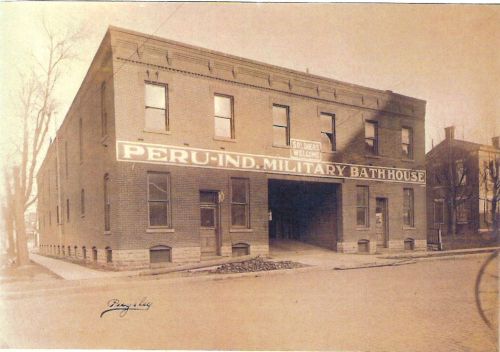 Exterior view of the Soldiers & Sailors Military Bath House at the corner of Fifth and Court Streets in Peru, WWI Photo courtesy of Miami County Museum |
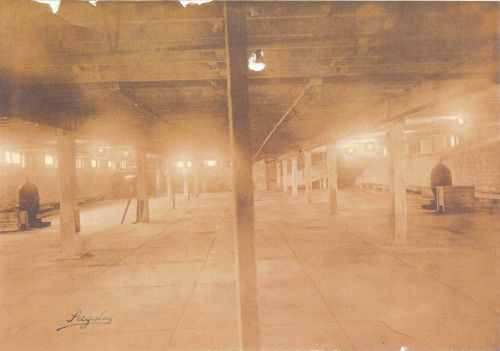 Interior view of the Soldiers & Sailors Military Bath House Photo courtesy of Miami County Museum |
The women who were involved in Miami County with the Canteen were:
Bessie Labonte Cole - co-chairwoman
Florence E Fuller Wallace - co-chairwoman
Sarah Baer Levy
Florence J. Stanley Eckstein
As well as many others not named here.
One of the co-chairwomen of the canteen in Miami County, Indiana was Florence E. Fuller Wallace. She was born in 1852 in Vermont. She was the daughter of Reuben and Mary J (Skinner) Fuller, along with three other siblings. By 1870 the family had relocated to Peru, Indiana and were running a hotel. Known by her friends as Fawn or Fawnie, Florence married a widower named Benjamin E. Wallace in 1884. He ran a livery stable and could not even write his name. Fawn taught him to read and write. The couple was living with Fawn’s mother Mary J. Fuller in 1880. Mary was a dressmaker. Ben was very interested in animals of all sorts and was not destined to remain running a livery stable. In 1884 the first Wallace Circus Performance was presented, and by the 1900 census Ben identified his occupation as showman. He continued to excel and in 1910 he listed his occupation as proprietor of a circus. Eventually, the Wabash Valley Bank and Trust was organized by Benjamin Wallace to handle the large amounts of cash his circus generated. He also had a contract with Senger Dry goods store for large purchases of materials for costumes. He sold his circus in 1913 after losing many of his elephants in the famous flood of that year. Fawn lost her husband due to complications of a hernia operation which he had done at Mayo Clinic in 1921. Fawn herself passed away on February 8, 1924, of heart-related causes. At the time of her death, Fawn owned: 2,200 acres of land in Miami County, Senger Dry Goods, the Colonial Apartments, the Bearss Dairy, the Wickler Dairy, and 31 pieces of real estate in Peru Indiana. In addition, she had controlling interest in the Wabash Valley Bank and Trust Company and many other large enterprises in the city of Peru Indiana. She is buried with her husband in Mount Hope Cemetery, Peru, Miami County, Indiana.
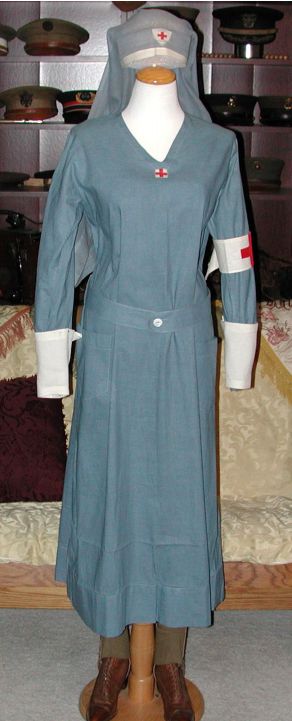 |
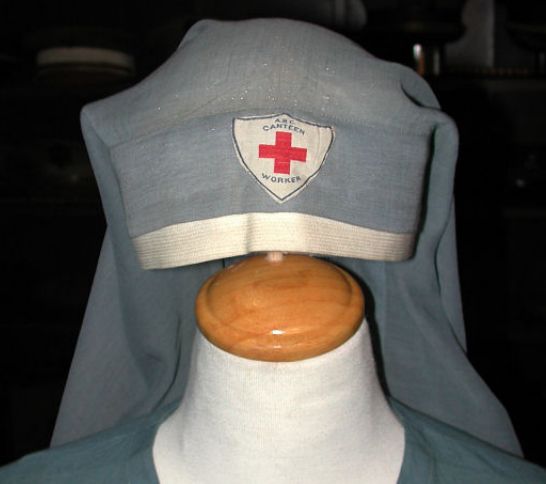 |
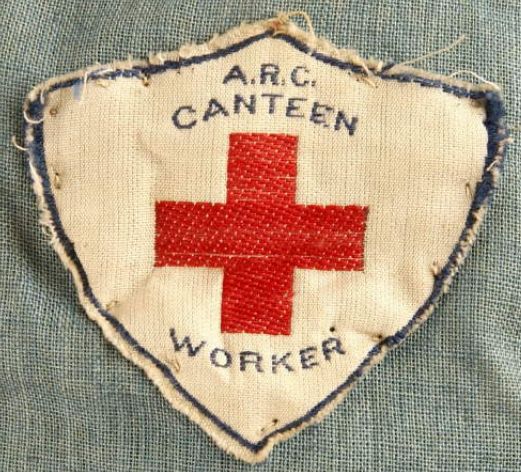 |
On the national level, just before the armistice, there were 700 canteens and 55,000 canteen workers located in the United States. According to figures compiled twenty months prior to February of 1919, throughout the nation more than 578,000 men were given medical aid that enabled them to proceed on their journey, and 9,700 men who were too sick to travel were transferred to hospital care. Red Cross Canteen workers wore a uniform of light blue cotton with a white button on collar and cuffs and a blue cotton belt with three white buttons. In the chest area on the front of the dress was a blue shield on a white emblem with the blue letters ARC CANTEEN WORKER and a large red cross. The Red Cross distributed to troops in the United States:
| 499,059 pounds of candy 5,604,359 bars of chocolate 1,497,096 gallons of coffee 10,852,352 cookies/doughnuts/pie 162,845 bushels of fruit 50,117 quarts of ice cream 144,059 gallons of ice drinks |
769,368 lunches 794,112 meals 14,824,869 sandwiches 70,518,049 cigarettes 185,632 cigars 2,039,321 gum 2,225,835 magazines |
7,968,829 matches 584,752 newspapers 15,956,219 post cards 77,771 cakes of soap 21,920 telegrams sent 108,949 pounds of tobacco 158,261 paper towels |
Canteens were not only in the United States but also were available for troops overseas. In addition to the Red Cross Canteens, both the YMCA and The Salvation Army offered canteen services to soldiers. The following women from Miami County, Indiana served in canteens at places other than their home county:
Daisy Blakely Morgan - worked in canteens across the US and in France.
Isabelle Graff - worked in a canteen in France with the YMCA
Anna Barnes Moore - worked in a canteen in France with the Salvation Army
For a young man who was far from home and facing the reality that he may not be one of the lucky ones to return, the women who provided the comforting care items and the recreational reading items must have been a very bright spot in a frightening time of their lives. The people of Miami County, Indiana can take pride in the fact that their county seat was a place that soldiers discovered to be a friendly and helpful stop along their journey.
Written, researched and submitted by Mary Rohrer Dexter